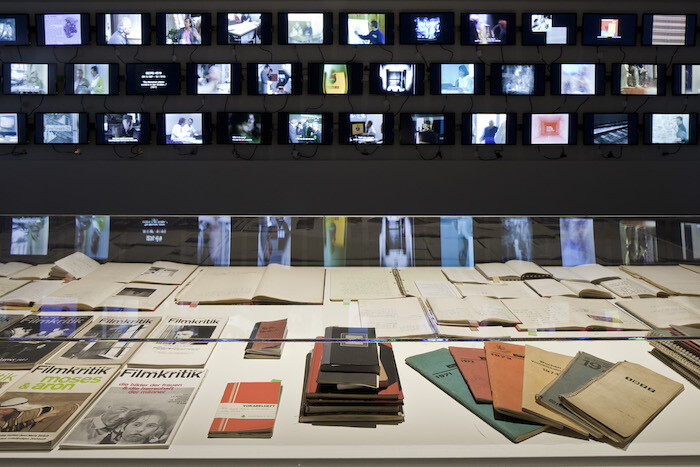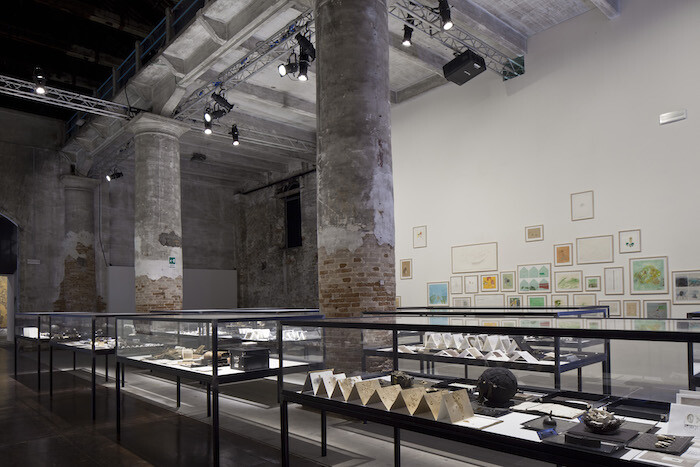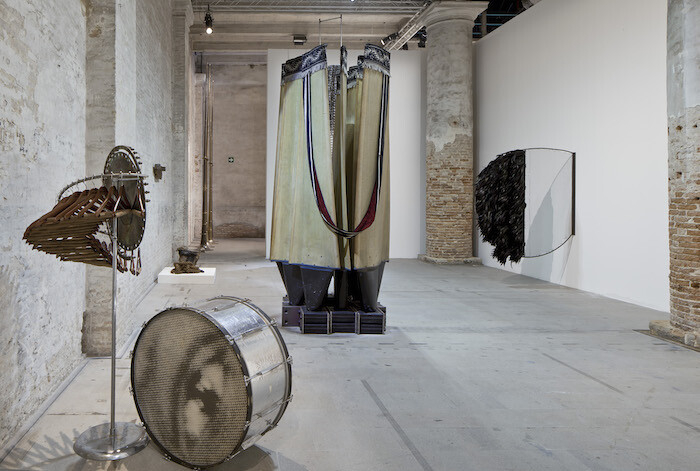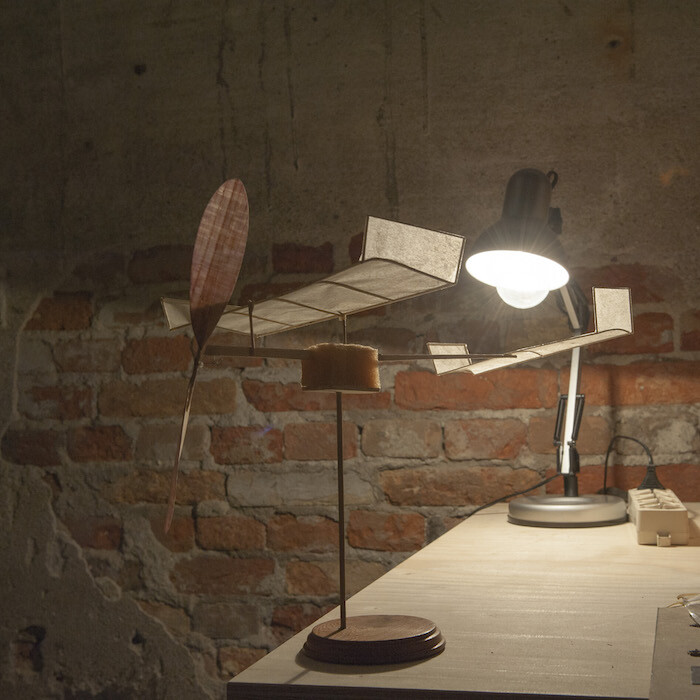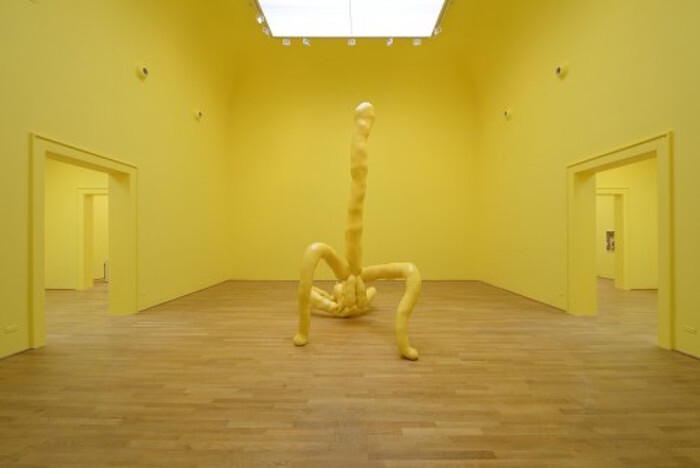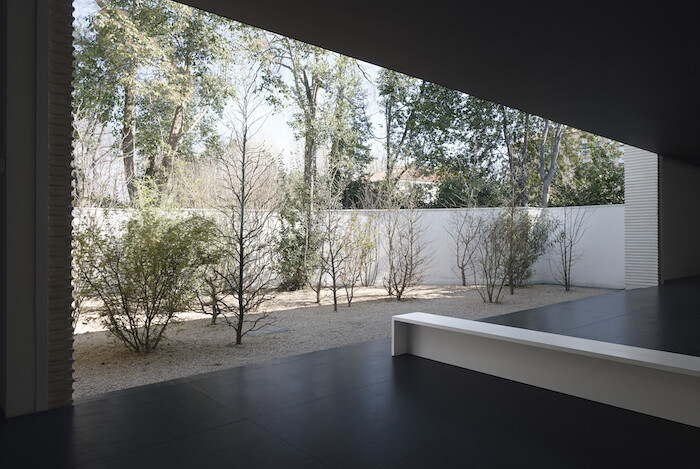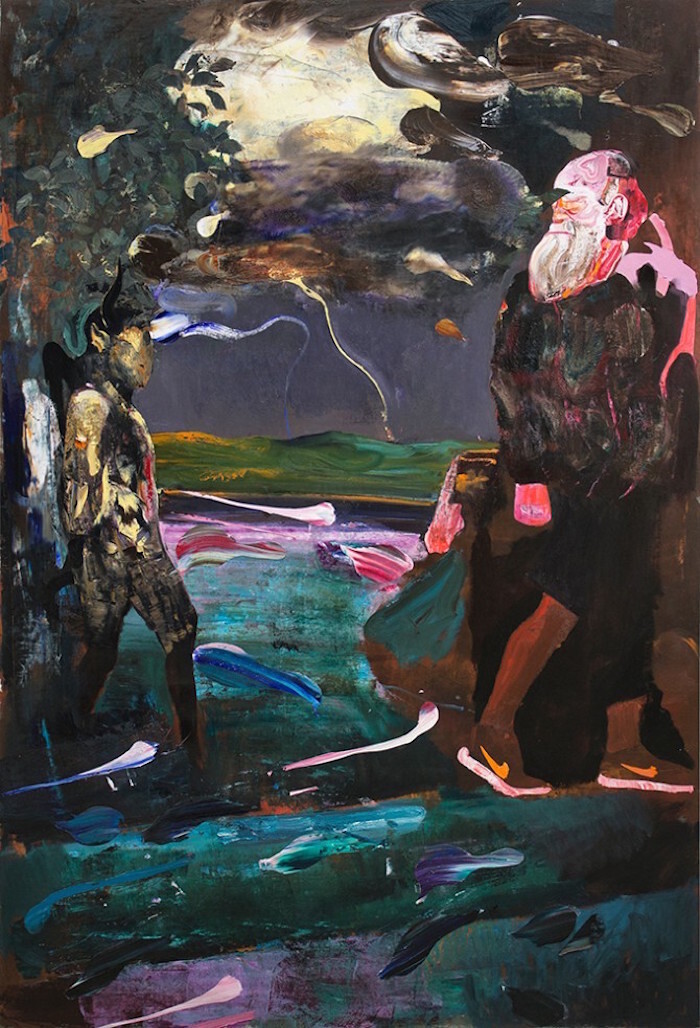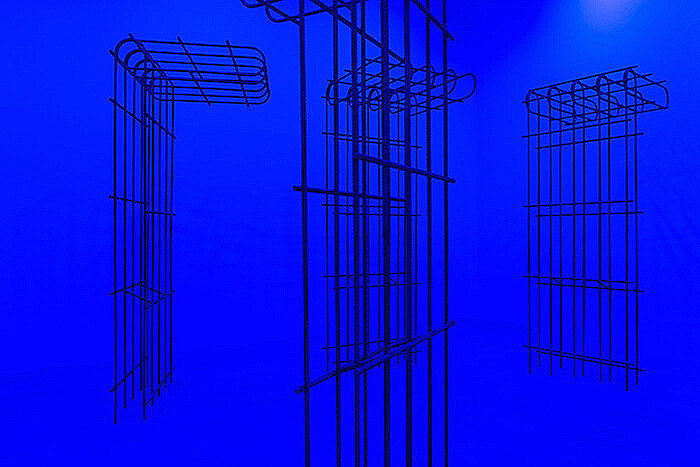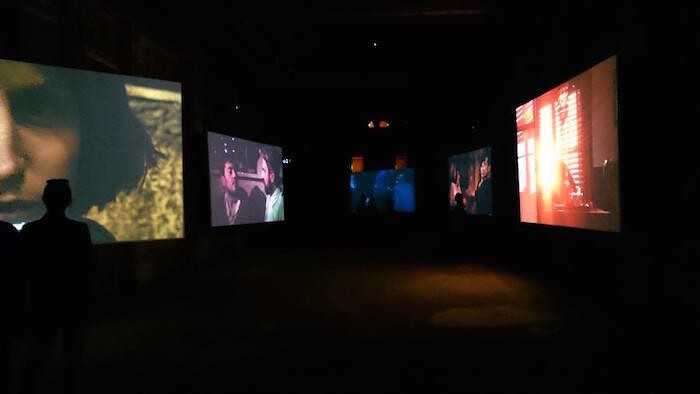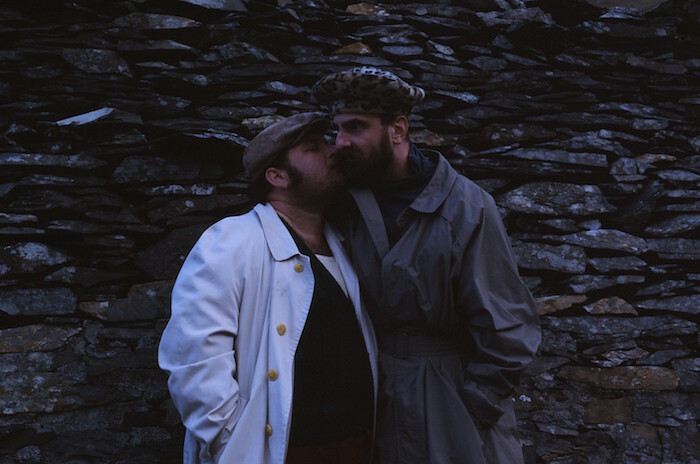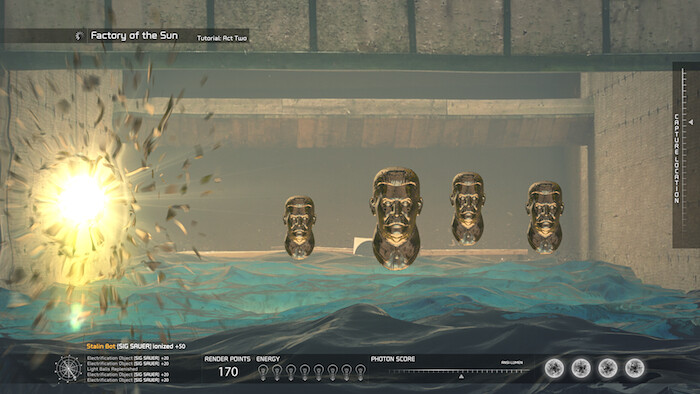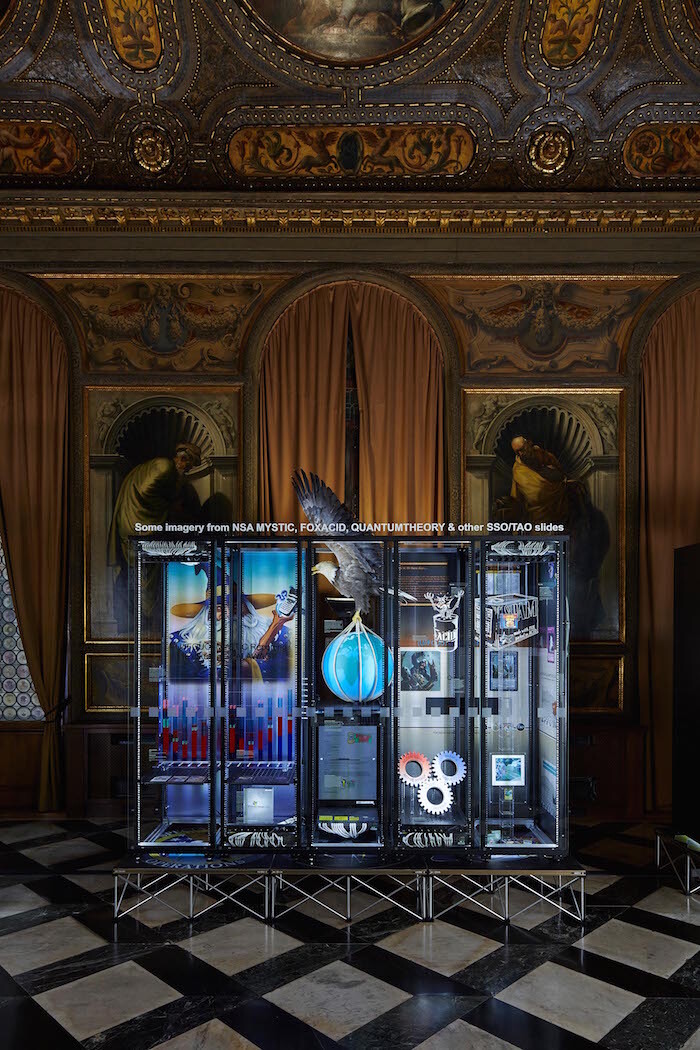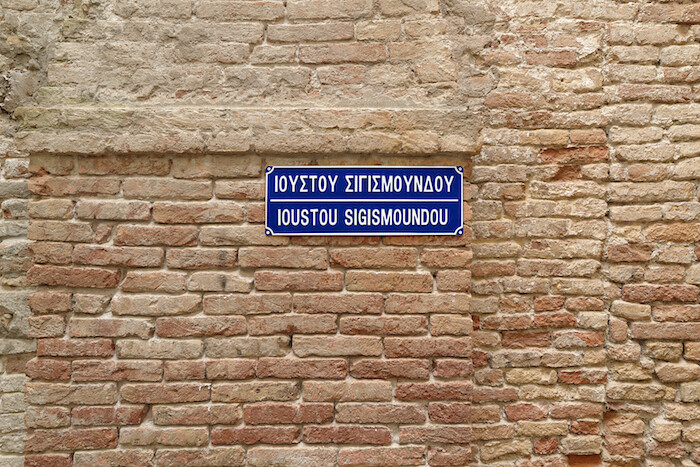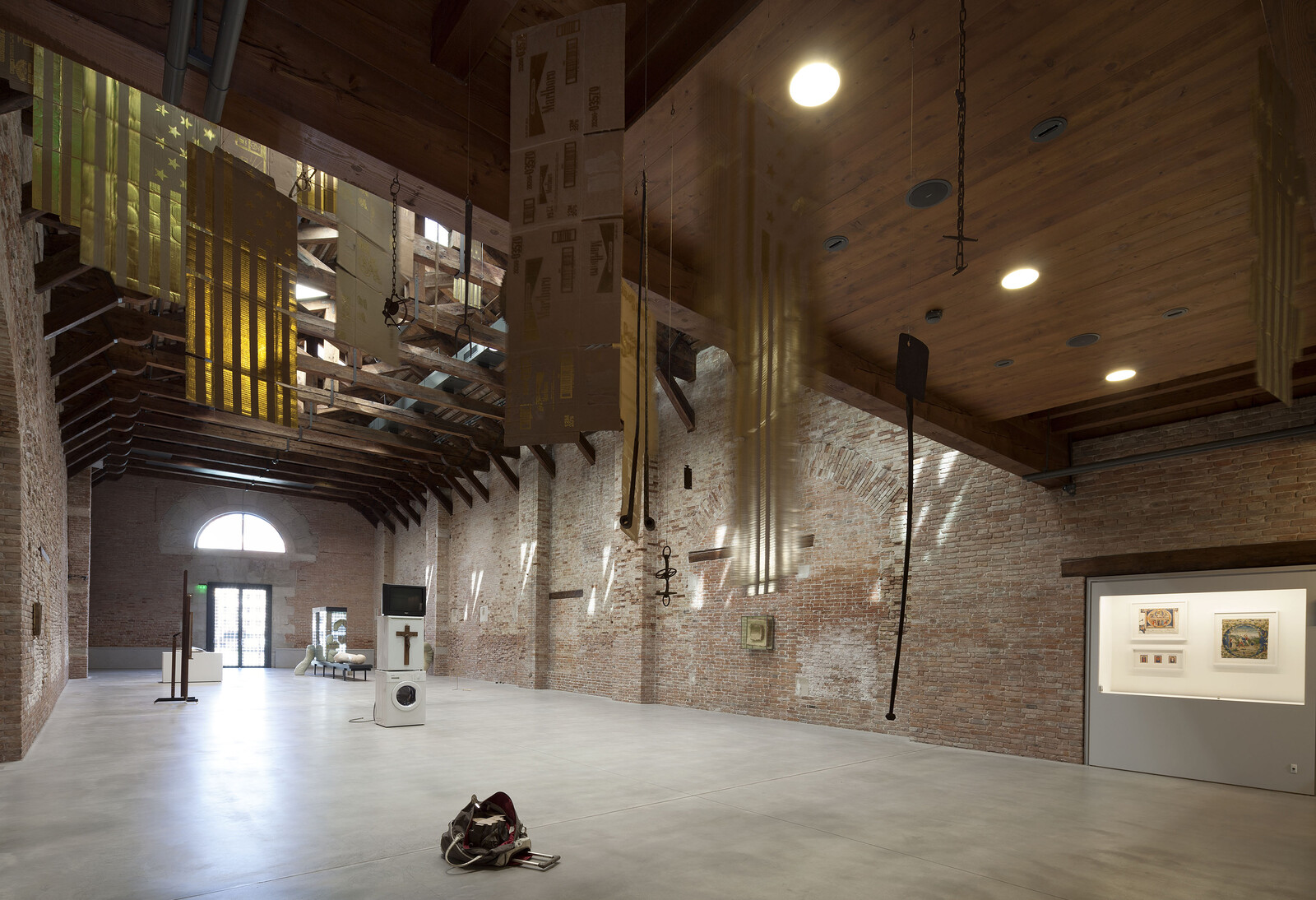May 9–November 22, 2015
Okay, in the event that you, dear reader(s), are not too tired of the harried Venice musings of the art-agenda corps rearing up in your inbox, here’s a final reflection. Allow me to start with an offensively obvious observation. In case you haven’t noticed, Venice is not particularly adapted to the presentation of contemporary art. In fact, this singular city is probably the least appropriate place to show contemporary art, or art of any kind, and this is from a totally practical point of view. From the aquatic transportation of works to questions of humidity to outmoded issues of national representation, Venice is not merely an anachronism but also, and perhaps more importantly, a point of extravagance without parallel in the global art-circuit calendar. When you learn how much it costs to get on the map even as a collateral event, you understand that the sheer mobilization of monies and resources that attends this multifarious, biannual event is categorically staggering. This mobilization is far from limited to communication as well as the production and transportation of art, but also includes lodging, dinners, and parties. For example, the night of my arrival, I found myself at a dinner for 400 people in a fourteenth-century palazzo. Given in honor of one artist, it was bankrolled by her four extremely powerful galleries, who, if they want to remain her galleries and stay in the highest echelons of commercial power, must massively throw down for this colossal repast and subsequent party, on top of already, no doubt, jointly co-funding the production of her pavilion, while, incidentally, co-funding other dinners, parties, and so on and so forth.
All of which means that, for all the ethnic and geographical diversity ideally encountered in Venice, the one single thing that, at the base, unites it all is expenditure, while the dominant mode of exercising power and influence in Venice is through potlatch. Wholly in keeping with Marcel Mauss’s theory, which, popularized by Georges Bataille’s 1949 book The Accursed Share, identified a form of North American tribal warfare which consisted of the willful, contrapuntal destruction of one’s material goods in order to demonstrate greater wealth and power than one’s enemy, the production and opening of Venice is a sustained, week-long act of admittedly sybaritic if polite battle. This being the case, extravagance and excess are integral to every aspect of the Venice Biennale. They are the underlying ground rules that govern it all.
And for all of Okwui Enwezor’s great, good intentions, his particular biennial is by no means an exception to this rule. Titled “All the World’s Futures,” his exhibition features a mere 140 artists, many of whom are represented by a dozen of works of art. Excess and even extravagance dominate this exhibition; from the punishing surfeit of work, especially in the Arsenale, to the performances, such as getting a group of professional actors to read all three volumes of Karl Marx’s Das Kapital, the general sense is one of total indomitability, of the total impossibility of seeing everything, of a kind of daunting Sisyphean labor of art viewing. This was most marked in moments such as an exhaustive presentation of Harun Farocki’s entire oeuvre in a room full of tiny screens, or say the Cuban-born, Belgium-based Ricardo Brey’s gorgeous, large, multi-vitrined installation Every life is a fire (2009–ongoing) of nested boxes and materials. It’s as if you were not actually supposed to look at the art, to directly experience it, but rather to dimly apprehend it, to know it was there, like having liberal access to an enormous library, but only for a few hours.
This excess was not merely a question of volume, but also of space, or more pointedly, the lamentable dearth thereof. For instance, what could have easily been one of the finest moments of the biennial—the extensive presentation of the late American sculptor Terry Adkins, which included works from his “Darkwater” series (2003–2008) and “Black Beethoven” series (2004), both of a markedly industrial nature—was hamstrung by being crammed into a kind of glorified corridor with all the curatorial sensitivity of an art-fair booth. Granted, there were elegant and precise exceptions to the general glut—most memorably Iranian-born, New York-based Raha Raissnia’s mysteriously lyrical 16mm film Longing (2014), or Argentine artist Ernesto Ballesteros’s performance of uncannily delicate flying airplanes—but they were just too few and far between.
Thus, due in part to a personal predilection and in part to such an enervating art-viewing experience, by the time I got out of the main exhibition, my threshold for curatorial excess was totally shot. As a consequence, I naturally gravitated toward those pavilions with the most of what the main exhibition lacked: economy, precision, and clarity. All of this I found most notably in the English, Danish, Austrian, and Romanian Pavilions in the Giardini, as well as the Kosovo Pavilion in the Arsenale, and then further afield in the Catalan Pavilion and the Cyprus Pavilion in the city. Sarah Lucas’s “SCREAM DADDIO” (2015) exhibition, a self-styled “confectionary” installation of crème anglaise-colored walls framing truncated sculptures of women’s bodies with cigarettes sticking out of various orifices, was refreshingly funny, irreverent, and devoid of language, while Heimo Zobernig’s arch-dry reconfiguration of the Austrian Pavilion in which he flattened the floor and the ceiling with broad, black monolithic volumes spoke mute, well, volumes. The pavilion of the Catalan filmmaker Albert Serra, titled “Singularity,” comprising a six-channel, three-hour-long film also titled Singularity (2015) was as exquisitely installed as it was intriguing, and “Darwin’s Room,” Adrien Ghenie’s exhibition of elegantly installed paintings in the Romanian Pavilion, were a welcomed consideration of history and craft. Despite being mired in the trite rhetoric of the real problem of borders, the Kosovo Pavilion, featuring Flaka Haliti, consisted of an installation, Speculating on the Blue (2015), of monolithic rebar sculptures emerging out of a sea of stunning blue sand. In the German Pavilion, Hito Steyerl’s mind-bending, Euro-trash dance extravaganza film installation The Factory of the Sun (2015) was a bewitching standout, enacting an apotheosis of contemporaneity, to which Simon Denny’s “Secret Power,” an investigative multi-part pedagogical off-site pavilion revolving around NSA-inspired imagery, was a fitting counterpart (albeit not very economic).
It was both Christodoulos Panayiotou’s “Two Days After Forever” at the Cyprus Pavilion and Danh Vo’s “mothertongue” at the Danish Pavilion, not to mention the latter’s curated exhibition, “Slip of the Tongue” at the Punta della Dogana, that offered the greatest curatorial relief. Both artists have a marked gift for the pithy and for materials, language, and the simultaneous de-sublimation and sublimation of history. Located in a second-floor apartment near the Accademia, Panayiotou’s spare and expertly installed presentation mixed motifs from his native Cyprus and Venice with astonishing and evocative precision, while Vo thoroughly filled the Danish Pavilion in the Giardini with virtually nothing, at least comparatively speaking. But it was the show at the Dogana, comprising artists from a variety of epochs alongside selections of Vo’s own work, that reminded me how invigorating, as opposed to enervating, good curating can be. Whatever one might think of this modified, bomb-shelter-esque vault of a venue, Vo’s exhibition leaves no doubt about the fact that he loves to install works in space and that he considers it—space—to be an absolutely crucial element in the presentation of any artwork. A novel idea, which, incidentally, presumes art to be much more than an idea.
I’ll end this review by posing two questions, which are not necessarily related. The first goes back to the beginning of this review and the issue of potlatch. All things considered, could it be that the reason Venice is still Venice, is still, despite everything, the apex of the global art circuit precisely because Venice expresses some essential truth (neither bad nor good) about art as we know it in the Western world at this point in history? Secondly, now that the exhibition genre of the biennial is so thoroughly codified, just like art was in Duchamp’s time when he posed himself a similar question to the one I’m about to pose: Is it possible to make a biennial that does not look like a biennial? If so, what would that look like?

